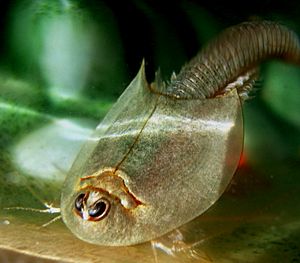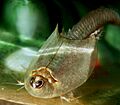Diapause facts for kids
Diapause is a special way some animals deal with tough times. It's like pressing the pause button on their growth or activity. This helps them survive when the weather is too hot or cold, there's no food, or it's too dry.
Many insects and some fish embryos use diapause. It's a clever trick that has developed over a long time to help them live through predictable bad conditions.
Contents
What is Diapause?
Diapause is a unique state of rest. It's different from just sleeping or hibernating. An animal enters diapause because of specific signals, like changes in daylight or temperature. Once it's in diapause, it needs other specific signals to wake up. This makes it a very controlled kind of rest.
How Diapause Helps Animals Survive
Animals use diapause to get through periods when life is hard. Imagine a tiny insect egg laid in summer. If it hatched right away, the baby insect might not find food in winter. So, the egg goes into diapause. It waits until spring when food is plentiful and the weather is warm.
This survival strategy is very common in:
- Insects: Many butterflies, moths, beetles, and flies use diapause.
- Arthropods: This group includes insects, spiders, and crustaceans.
- Fish embryos: The tiny developing babies of some fish species, especially those that live in temporary ponds, use diapause. This lets them wait for the rains to return.
Diapause vs. Hibernation
You might think diapause sounds like hibernation, but there's a key difference. Hibernation is often a response to cold. Animals slow down their bodies to save energy. Diapause, however, is a deeper, more planned pause. It's triggered by specific environmental cues and can only be ended by other specific cues. It's like a programmed stop and start.
How Animals Behave During Diapause
Animals in diapause can act in different ways. Some become completely still, like a pupa (the stage before a butterfly) or an egg. They don't move or eat much at all.
Other animals might still be active, but their bodies are working differently. For example, the amazing Monarch butterfly travels thousands of miles to warmer places for winter. During this long trip, they are in a type of diapause. They eat less, and their bodies don't develop for reproduction until spring. This helps them save energy for their long journey and wait for the right time to lay eggs.
In all cases, whether an animal is still or moving, its growth and development slow down or stop completely during diapause. This helps them conserve energy and wait for better times.
Images for kids
See also
 In Spanish: Diapausa para niños
In Spanish: Diapausa para niños



